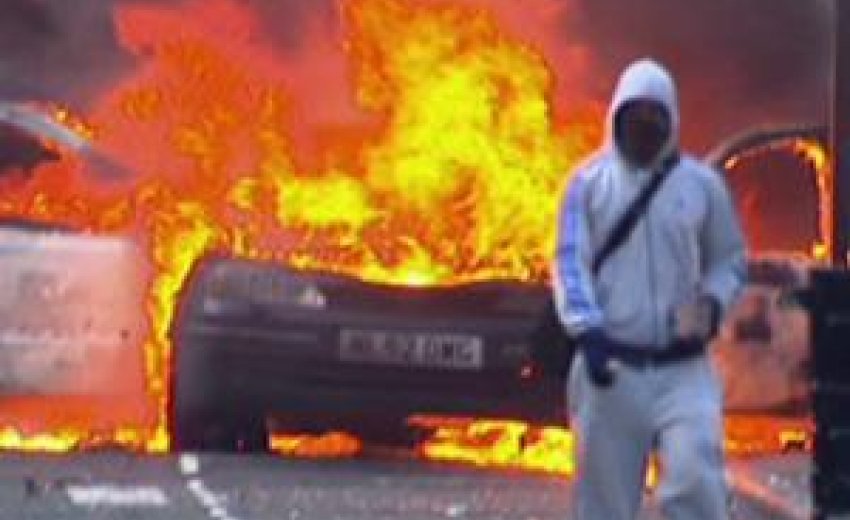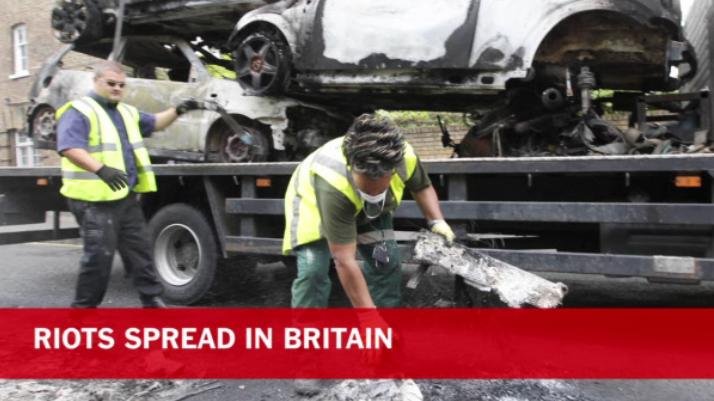LONDON — With 10,000 additional police officers deployed across London on Tuesday night, looting and arson dipped sharply from the anarchic scenes that shook Britain over the previous three days, even as violence ticked up again in several other major cities, including Birmingham, Manchester and Liverpool.
Hopes that the worst unrest in Britain in a generation had crested and begun to fall continued to weigh uneasily against fears that more robust police action might fail to put more than a temporary curb on the disorder. Sudden flare-ups continued in parts of London, with minor attacks reaching even into the upscale Knightsbridge shopping district, a tourist draw.
With a decision not to call in the army, a step the government considered and dismissed on Tuesday, the police force appeared to be stretched near its limit by what amounted to a risky shell game, with forces outside London sending their crack anti-riot units into the capital as reinforcements. One redeployed unit traveled from Manchester only hours before scores of youths stormed into that city’s center, setting fire to cars and buildings and looting shops.
The situation posed a daunting challenge for Prime Minister David Cameron, who returned overnight on Monday from a vacation in Italy to take charge of what appeared to have been a faltering government reaction to the mayhem. He flew into a storm of criticism, from residents of the neighborhoods hit by the rioting and from others who said that he should have acted sooner to crack down on the unrest.
Cameron had hesitated for two days to abandon his break as the looting and arson spread across London, and then to other cities. It started in the Tottenham area in London after Mark Duggan, 29, who was said by the police to have been a gang member, was killed by an officer last week.
On Tuesday, a police oversight body said that forensic tests had shown that both shots fired at the scene came from a police officer’s submachine gun, and that the tests had so far shown no evidence that the loaded pistol carried by Duggan had been fired.
For the moment, though, the circumstances of Duggan’s death appeared to be remote from the forces driving the riots.
Writing in Monday’s issue of The Independent, Diane Abbott, a left-wing
member of Parliament who represents Hackney, one of the neighborhoods
worst hit by the rioting, said the pattern of the disorder was similar
to that of the last major racial rioting in London, in 1986. Now, as
then, she said, “parts of the community seem to have been a tinder box
waiting to explode” because of joblessness and cuts in government
services.
But she added: “As was the case 26 years ago, nothing excuses violence.
There is no doubt that all types of mindless thugs latched onto the
disturbances.” (NYT)


